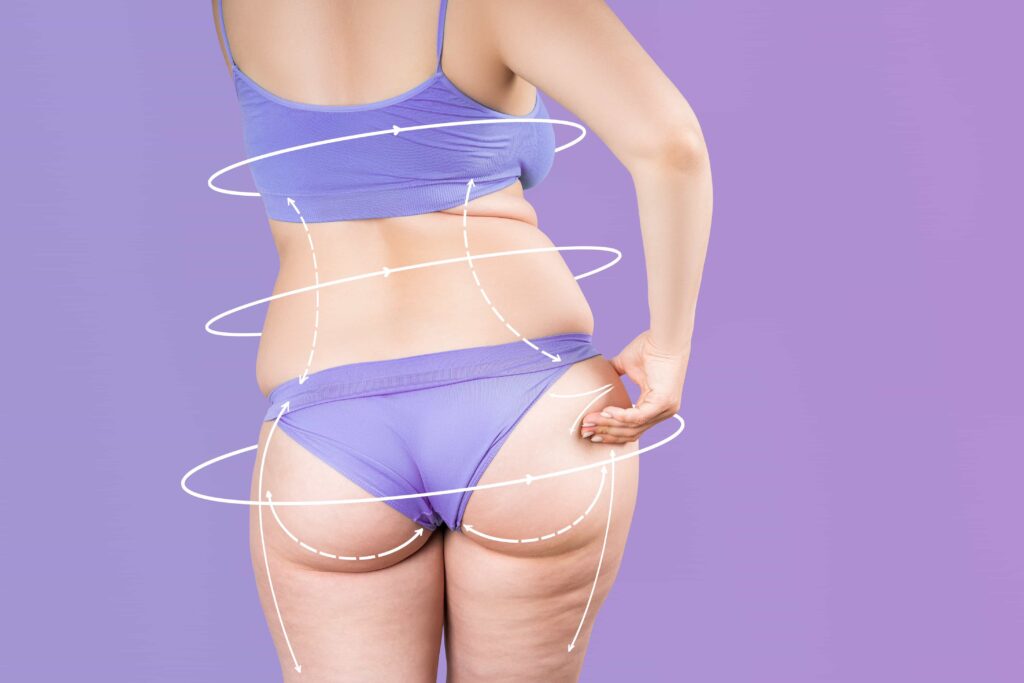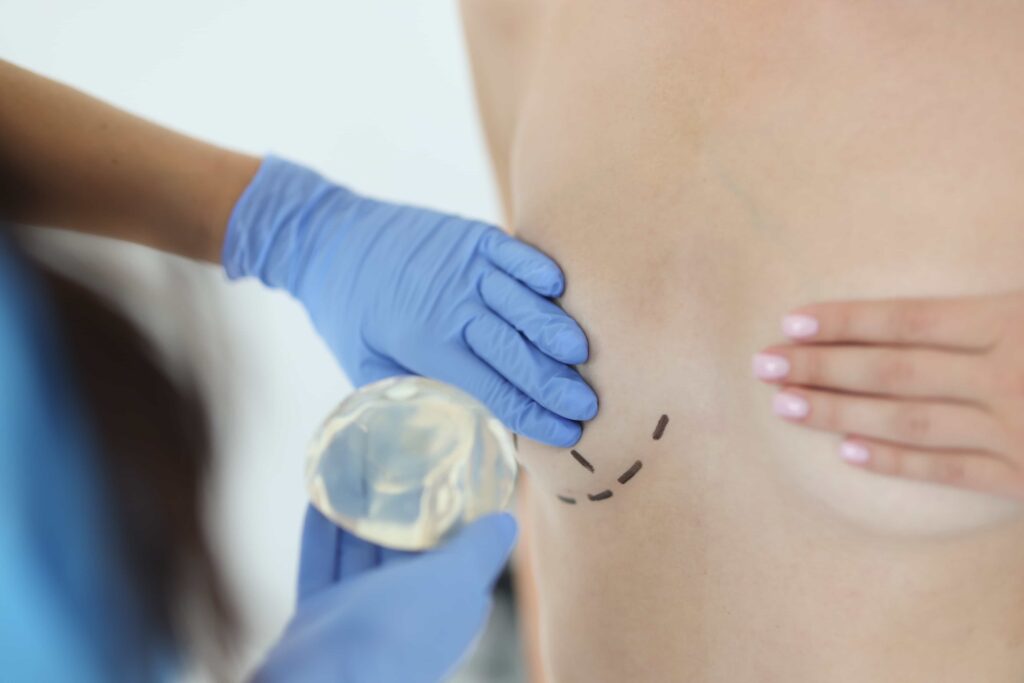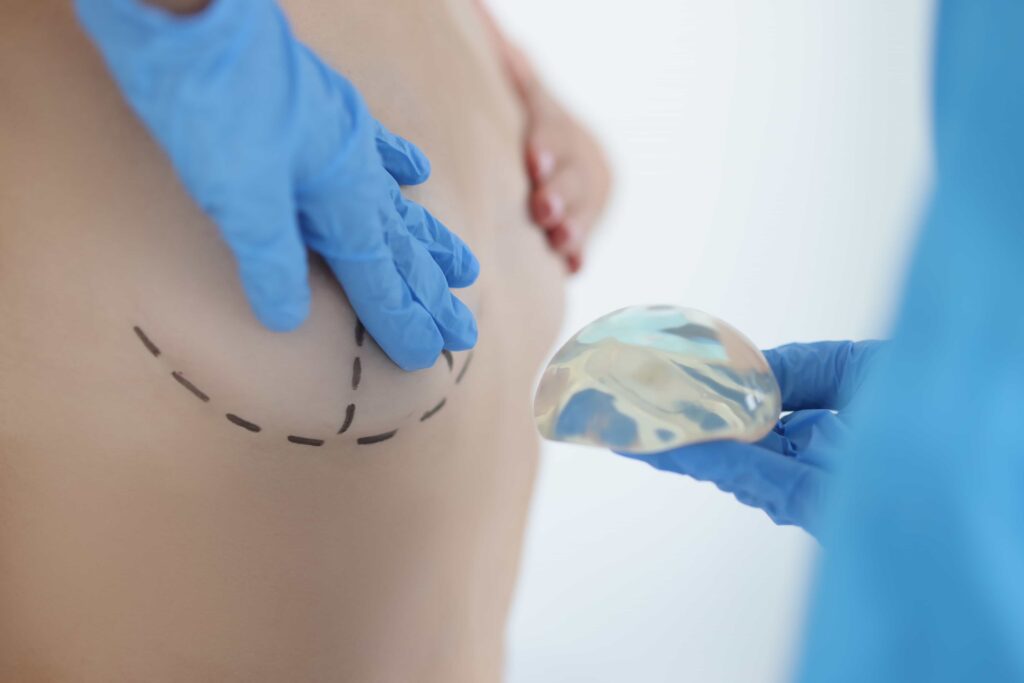Enhance the shape of your buttocks by inserting silicone implants into the gluteal muscle.
Buttock implants are a permanent surgery that adds volume to flat or square-shaped buttocks.

Buttock augmentation, also called gluteal augmentation, is a surgery that improves the shape, size, or contour of the buttocks.
This is done by placing silicone implants into the buttocks.
Surgeons place these implants either under the muscle or above it, deep within the tissue.
The final look depends on where the surgeon places the implants.
When placed inside the muscle, implants lower the risk of sciatic nerve injury but may stick out.
On the other hand, implants placed under the muscle look more natural but raise the risk of nerve damage.
Buttock implants offer clear benefits by increasing both the volume and shape of the buttocks. Unlike fat transfer, implants work well for people with little body fat. This makes them a great option for lean individuals who want a fuller look.
Long-Lasting Results
One major benefit of buttock implants is their durability. While fat transfer may need touch-ups over time, implants provide long-term results that often last for many years.
Improved Safety and Reliability
Thanks to newer technology, implants are now safer and more reliable. Modern designs help lower the risk of issues like shifting or breaking. In addition, updated surgical techniques have made the procedure safer, with fewer risks.
Custom Fit
Buttock implants come in different sizes and shapes. This allows surgeons to customize the procedure based on each patient’s needs and goals.
Quick Recovery
Although recovery varies, most people heal in just 3 to 5 days. It’s important to plan ahead and follow post-surgery instructions to support smooth healing.
-Long lasting outcomes: Buttock implants provide predictable and long-lasting results.
– Unlike fat injections, implants are not subject to resorption by the body.
Minimal Risk of Rupture: Modern buttock implants are made from highly durable, semi-solid silicone gel.
– Broad Eligibility for Candidates: Buttock implants are suitable for individuals of various body types and sizes.
– No requirement for excess fat, unlike buttocks fat transfer surgery, increasing accessibility for patients.
– Pain and Associated Risks:
Introduction of sizable objects into sensitive areas with significant movement.
– Patients should anticipate a considerable recovery period post-surgery.
– Transient swelling is common postoperatively.
– Recovery may take 4 to 6 weeks before returning to regular daily activities.
– Activities affected may include sitting and specific forms of exercise.
Consultation
Every successful buttock augmentation starts with an in-person consultation. During this visit, you’ll get detailed information about the procedure, meet your surgeon, and see if you feel comfortable moving forward.
Surgery
At the start of surgery, the provider gives anesthesia to keep you comfortable. Then, they make a small incision—either at the top, bottom, or between the buttocks. After that, they insert the implants on both sides, placing them either inside or beneath the gluteal muscles. Each surgeon may use a slightly different technique based on their training and your needs.
Placing the implants inside the gluteus muscles helps lower the risk of damaging the sciatic nerve, which could lead to nerve pain or issues with nearby muscles. However, this method may cause the implants to appear more noticeable since they sit closer to the surface compared to implants placed deeper beneath the muscle.
Post-Surgery Recovery Timeline
Immediate: During this initial phase, patients often experience moderate to severe pain and tenderness, which can be effectively managed with prescribed pain medication. It is advisable to refrain from sitting, bending, or sleeping on the back until clearance is obtained from the surgeon. If liposuction has been performed, the use of a compressive garment may be recommended.
One Week Post-Surgery: A notable reduction in pain and swelling generally occurs during this period. Patients are encouraged to engage in walking and light activities while limiting prolonged sitting and bending. Anticipation regarding the surgical results typically increases at this stage.
Two Weeks Post-Surgery: At this juncture, most patients are able to sit comfortably and resume sleeping on their backs. Walking becomes progressively more comfortable, although some residual swelling may persist. Patients may return to work, provided that their employment does not involve physically demanding tasks.
Month Post-Surgery: Bruising and swelling are expected to diminish significantly, although implants may still exhibit firmness. Many patients can safely resume light to moderate exercise during this timeframe.
5-6 Weeks Post-Surgery:** By this phase, bruising and swelling are largely resolved, allowing patients to observe the final surgical results. Most individuals are typically cleared to engage in all activities, including those that are physically strenuous.
Results Post-Surgery: By six weeks this phase, bruising and swelling are largely resolved, allowing patients to observe the final surgical results. Most individuals are typically cleared to engage in all activities, including those that are physically strenuous.
Buttock implants present fewer inherent risks compared to procedures involving fat transfer, particularly regarding the potential for fat embolism. Fortunately, patients who are dedicated to undergoing buttock implant surgery can take several measures to mitigate the likelihood of such undesirable risks and complications.
Primarily, it is crucial to select a Board-Certified Plastic Surgeon with extensive experience in various buttock implant techniques. A qualified surgeon will possess numerous years of experience in performing implant surgeries across a diverse range of cases. Not only will they be able to achieve optimal results, but they will also provide comprehensive post-operative care and guidance to minimize any adverse effects.
Additionally, prospective patients should conduct thorough research and carefully review before-and-after photographs of previous patients to ensure they make an informed decision when selecting their surgeon.
Want to know if your plastic surgeon certified, click here.
The cost of buttock implants typically falls within a range of $10,000 to $12,000.











